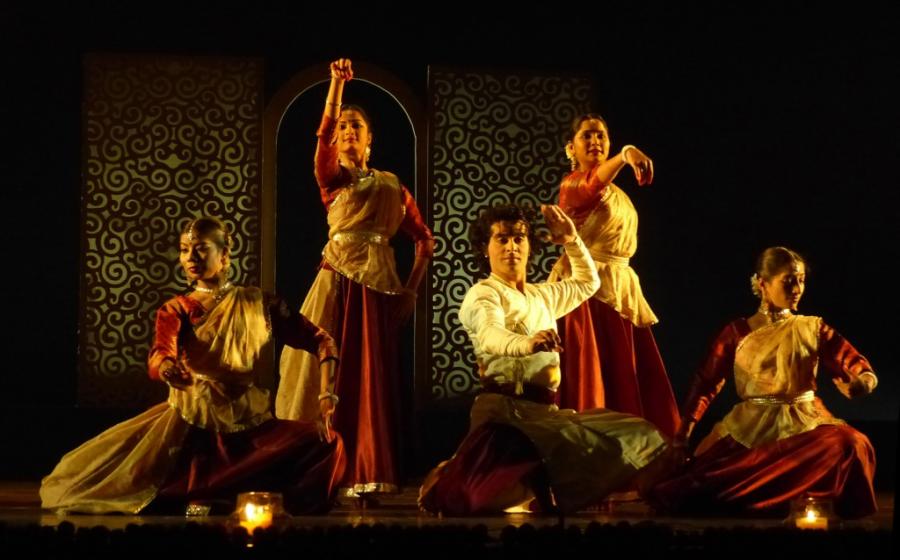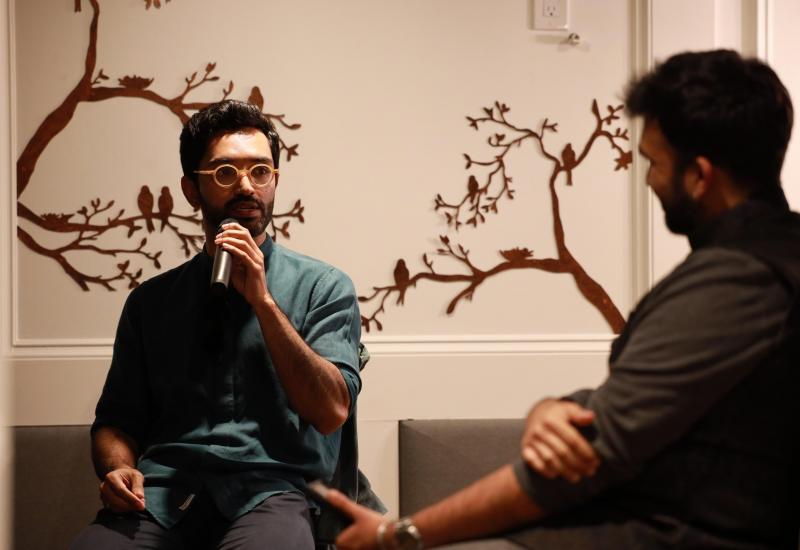Kathak Kendra then and now
Over the years, changes in approaches to dance, to its teaching traditions and performance practice have been taking place. The physical context also has its impact. Sushmita Ghosh, former director of Kathak Kendra, shows how the Kendra has been keyed in to some of these changes, from its early decades of rich, creative cross-fertilisation.
Kathak Kendra was established in 1964 in New Delhi as a constituent unit of the Sangeet Natak Akademi (India’s National Academy of Music, Dance and Drama).
For a short while, kathak enjoyed the grand privilege of being the only Indian classical dance that received patronage from the Central Government. Manipuri, in the form of the Jawaharlal Nehru Manipuri Dance Academy in Imphal, joined the league soon after. Kalakshetra (Chennai) and Kutiyattam Kendra (Tiruvananthapuram) came decades later.
The 1970s and 1980s were the heydays of artistic expression and exploration at Kathak Kendra. The grand premises of the institution housed at the famous Bhawalpur House complex shared its boundary walls with premier establishments like NSD (National School of Drama that produced stalwarts such as Naseeruddin Shah, Om Puri and Anupam Kher), and CCRT (Centre for Cultural Resources and Training, the Central Government agency entrusted with the task of connecting with the entire nation through arts and cultural dialogue). Surrounded by creative energies all around, the Kendra students enjoyed the opportunity to make the best of many worlds. The impact continued well into the next decade.
The renaissance of the format of a kathak performance was well under way in the 1960s as kathak graduated to the proscenium stage. The nationalist movement around the time of Independence rekindled the interest in the cultural heritage of the nation. The classical arts were now finding wider acceptance, outside the gharanas, into the contemporary, Western-educated, urban audiences.
The transformation, however, does not seem to have had much impact on the training material or teaching pedagogy of the art form except that students could no longer live in the guru’s home and imbibe the tradition. The traditional mode of education through this gurukul system had disappeared over the three centuries preceding Independence. Nothing had replaced it.
Kathak Kendra, to some extent, served as a partial replacement for the<I>gurukul</I> system. The government created the infrastructure that allowed a handful of masters, who had a team of musicians and working space at their disposal, to create, to teach and to share their work with the wider world. Some of the best names in the field were brought in as gurus.
These gurus and masters, who were products of the guru-shishya (guru-student) days, found a nurturing and safe haven amid the chaos and shifting socio-cultural values in post-independent India, to give expression to their creative flight. The parampara (the guru-shishya tradition) therefore, indirectly, fed the training of young dancers, even a few decades after its essential form was vanquished.
Several generations of kathak dancers took shape simply from this rich ambience of artistic buzz. The masters brought with them infinite skill, total dedication and an innate sense of the underlying interconnection between the arts. Young dancers grew up experiencing Durga Lal on his mesmerising Pakhawaj, Munna Shukla, who was a treasury of poetry and quotes; and of course the legendary Birju Maharaj, who danced, sang, painted, wrote and composed.
Though a syllabus was created and a system of examinations was put into place along the lines of assessment structures in schools and universities, the system was not meticulously overhauled to accommodate contemporary concepts of dance education, evaluation, feedback assessment and its tangible criteria. It was simply the charismatic art and tireless dedication of the gurus that created enough food to nurture the next few generations of younger dancers. The institution did not prepare itself for the times when the charisma would no longer be available to sustain the institution.
The change crept in thus: one by one the great gurus retired or passed away and eventually all but the National School of Drama were driven out of the buzzing Mandi House into the sterile diplomatic area of Chanakyapuri.
The Kendra today still functions along the same lines as it did four decades ago – the daily dance classes with live musicians, the subsidiary or allied subjects of Hindustani vocal, tabla and pakhawaj, examinations twice a year, the occasional theory lectures, the grand Mahotsav and the peripheral Utsavs (festivals).
Each year Kathak Kendra produces between five and ten graduates who have had at least five years of full-time training, including in music, yoga and theory as well as dance, for six days a week, seven to eight hours a day. In spite of the rising number of artists as well as audiences, one doesn’t find much change in the professional avenues available to these highly-skilled graduates. Many of the graduates set up their own little schools, encouraging their students to train once or twice a week and take examinations conducted by the various independent boards such as Prayag Sangeet Samiti and Gandharva Maha Vidyalaya. (Kathak Kendra’s degrees are not officially recognised anywhere in the world, not even for various appointments at its parent organisation, the Sangeet Natak Akademi.)
As group choreographies gain in popularity (reality shows on the small screen adding to their attraction), young graduates are now beginning to find employment opportunities in dance groups led by senior artists and choreographers. The demand, however, far outweighs the supply. Working as dance teachers in schools does bring some financial security, but at a heavy cost of one's dreams as well as the individual creative leaps.
Although the graduates of today seem more skilled than their earlier counterparts, their training lacks the bandwidth to equip them to venture beyond the traditional opportunities to explore other related avenues; for example, dance writing, dance therapy, music composition, event designing and curating. Success is still counted by the number of students, performances and the tours abroad.
The task of upgrading the training structure at Kathak Kendra to address the present-day demands of the profession at a global stage seems painfully slow, especially with several visionary directors resigning in quick succession amid protest actions and other political crises each time.
Although the gharanas of kathak are named after the cities from which they evolved, post-Independence kathak definitely has a marked Delhi-centric emphasis, with Kathak Kendra as its centre.
A quick glance at the list of alumni of the Kendra over the last fifty years points at a figure of around 30 per cent who came from other states. Of these, many have made Delhi their home, though a few have returned to the metropolises from which they came. Access to affordable quality training and education in kathak, however, remains a dream for the small-town aspirants, who flock to the Kendra.
A tremendous effort is now required to turn the tide and recreate the classical sensibility, not only in the artist but also the audience. The colossal grass-roots work that has been neglected all this while needs to start before it is too late. Mere festivals are not enough. Each child needs to be educated about his/her vast and rich heritage and helped to reconnect with it. Any takers.
“It is a challenge for the dedicated soloist in Indian classical dance today to create a strong enough financial base from where to dive deep within his/her creative realm. But this strong focus is essential for the soloist




















